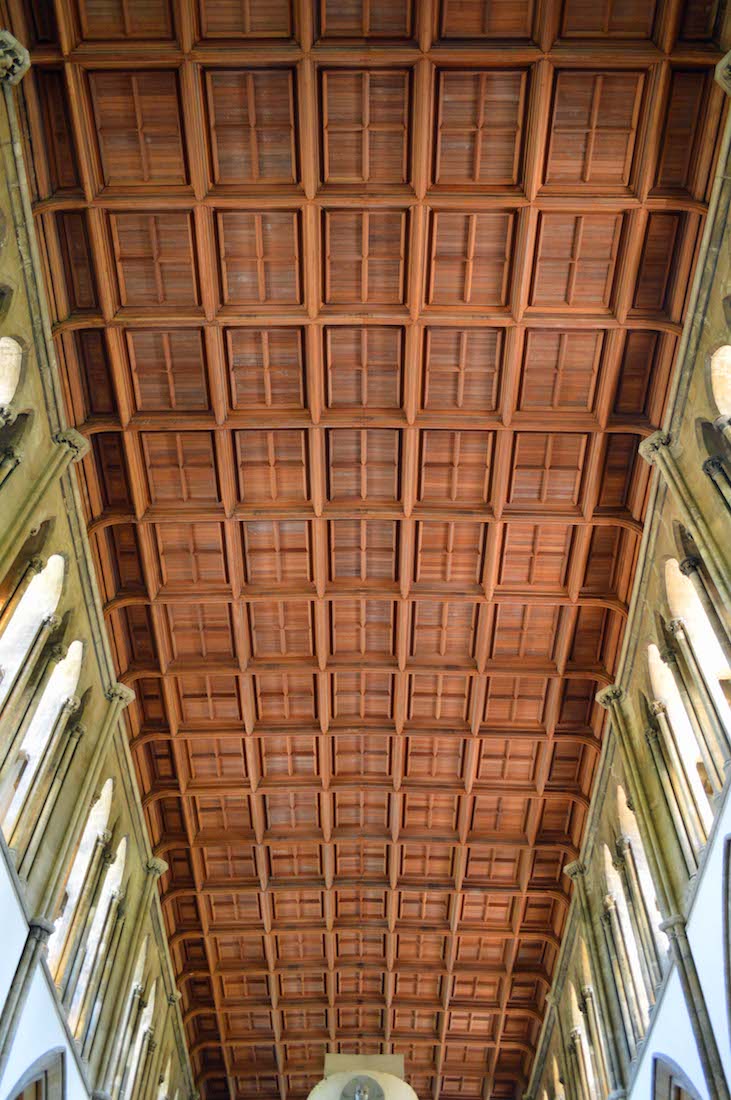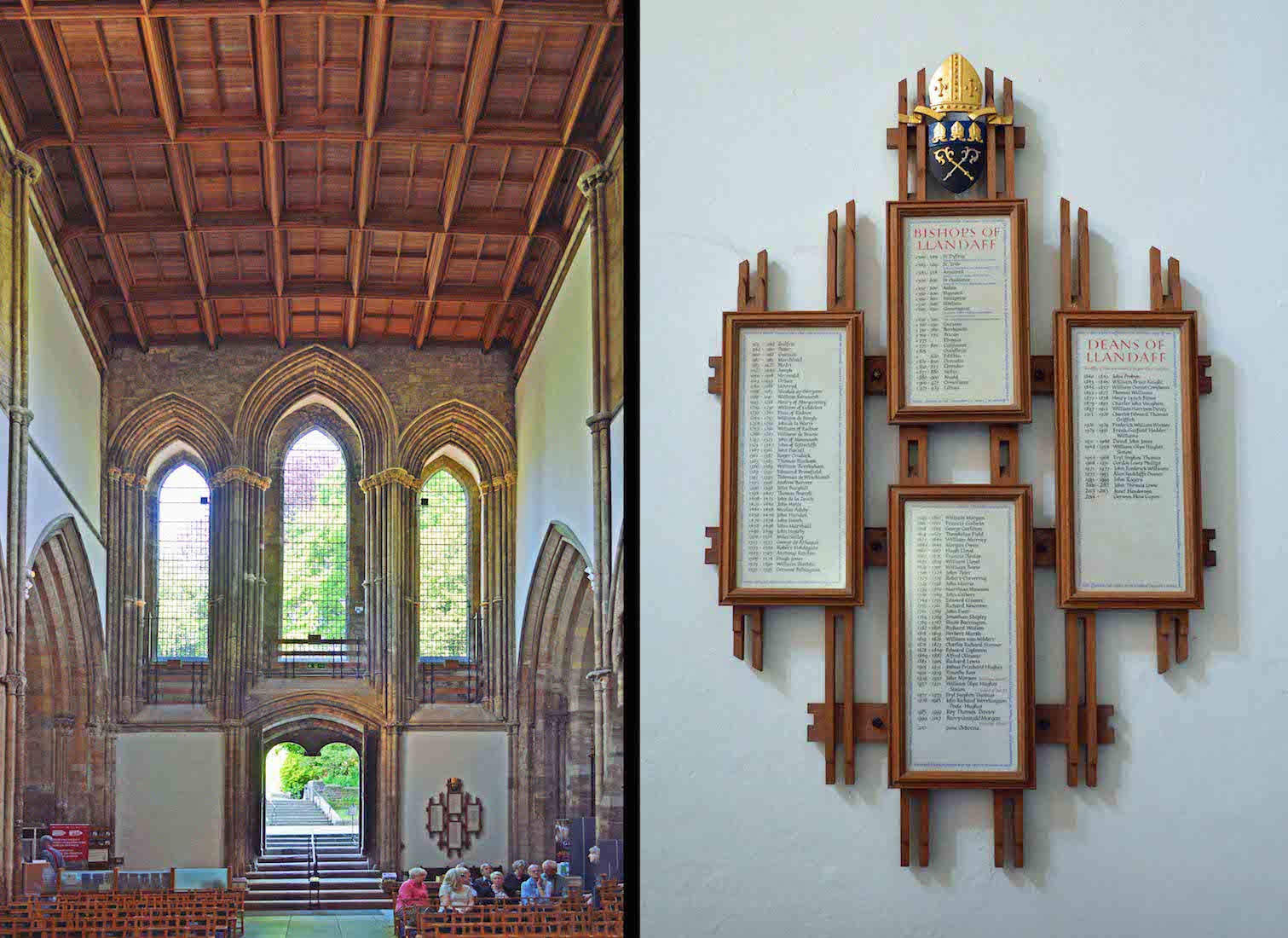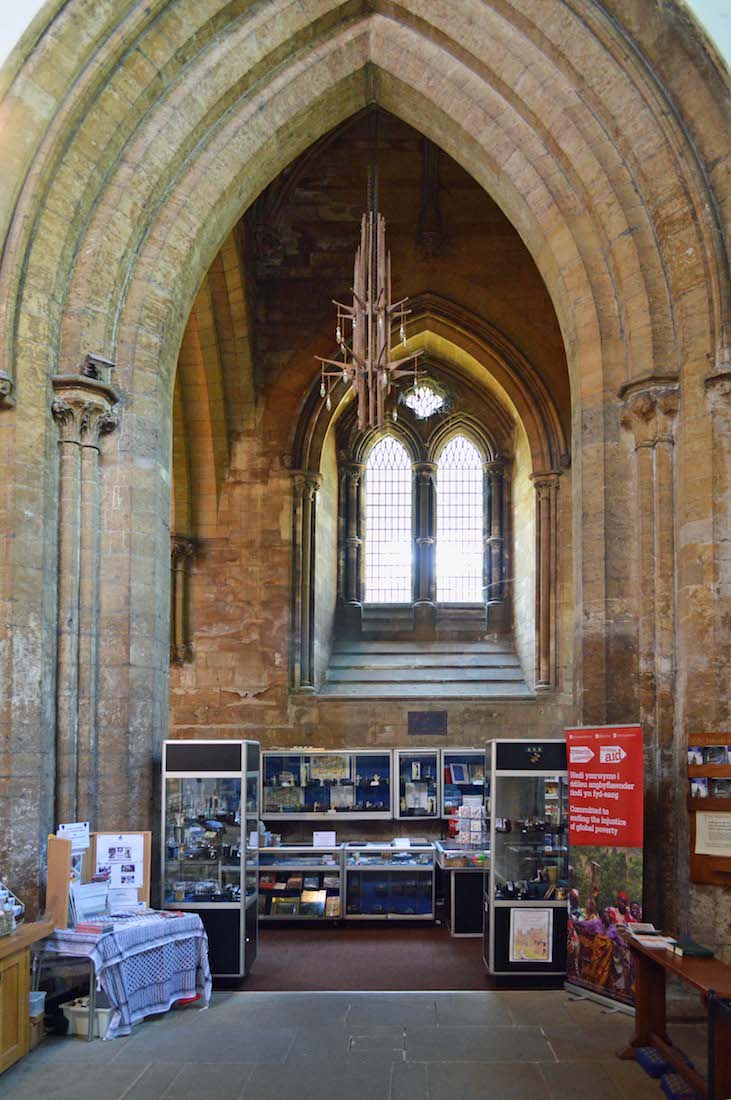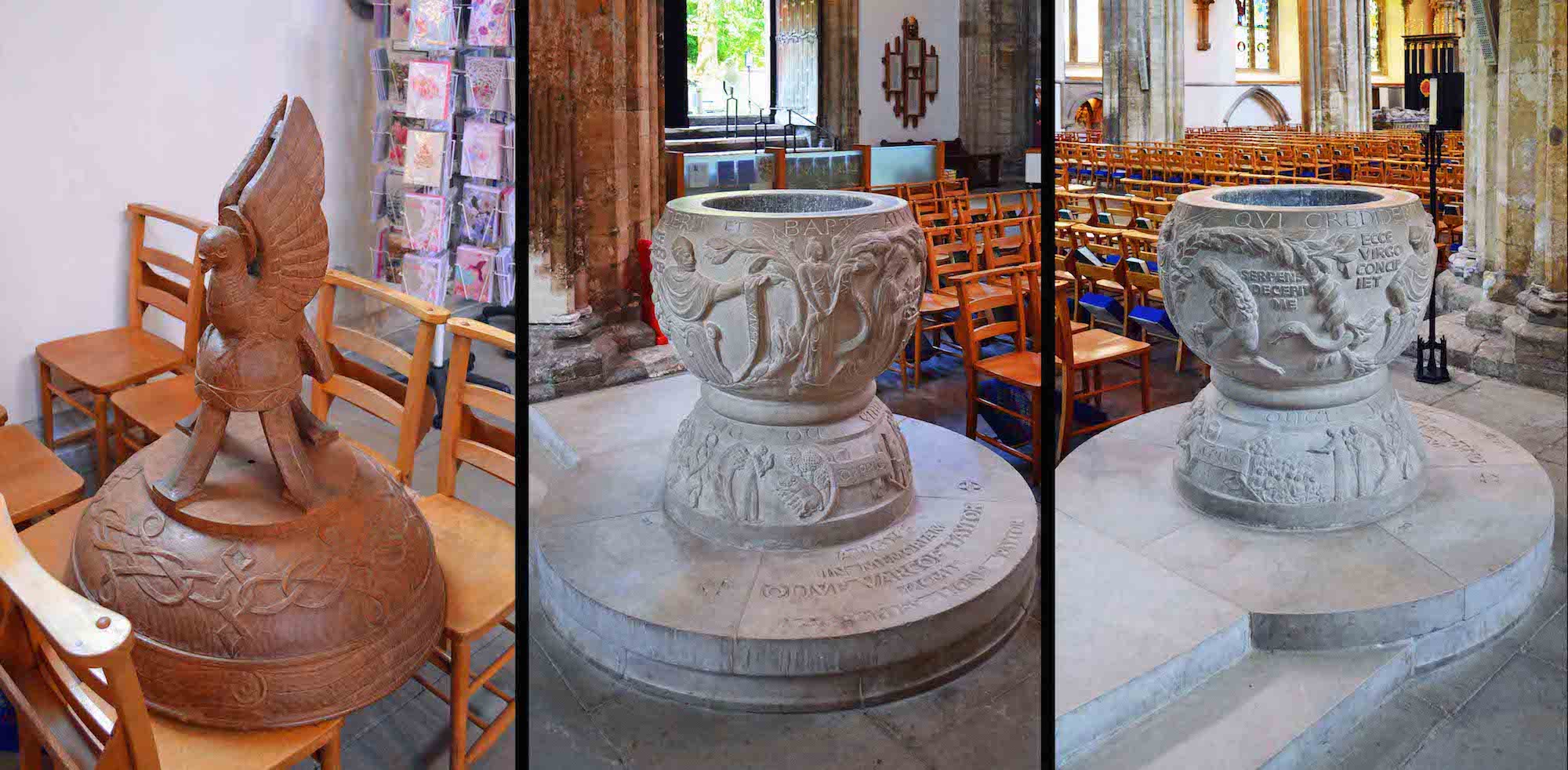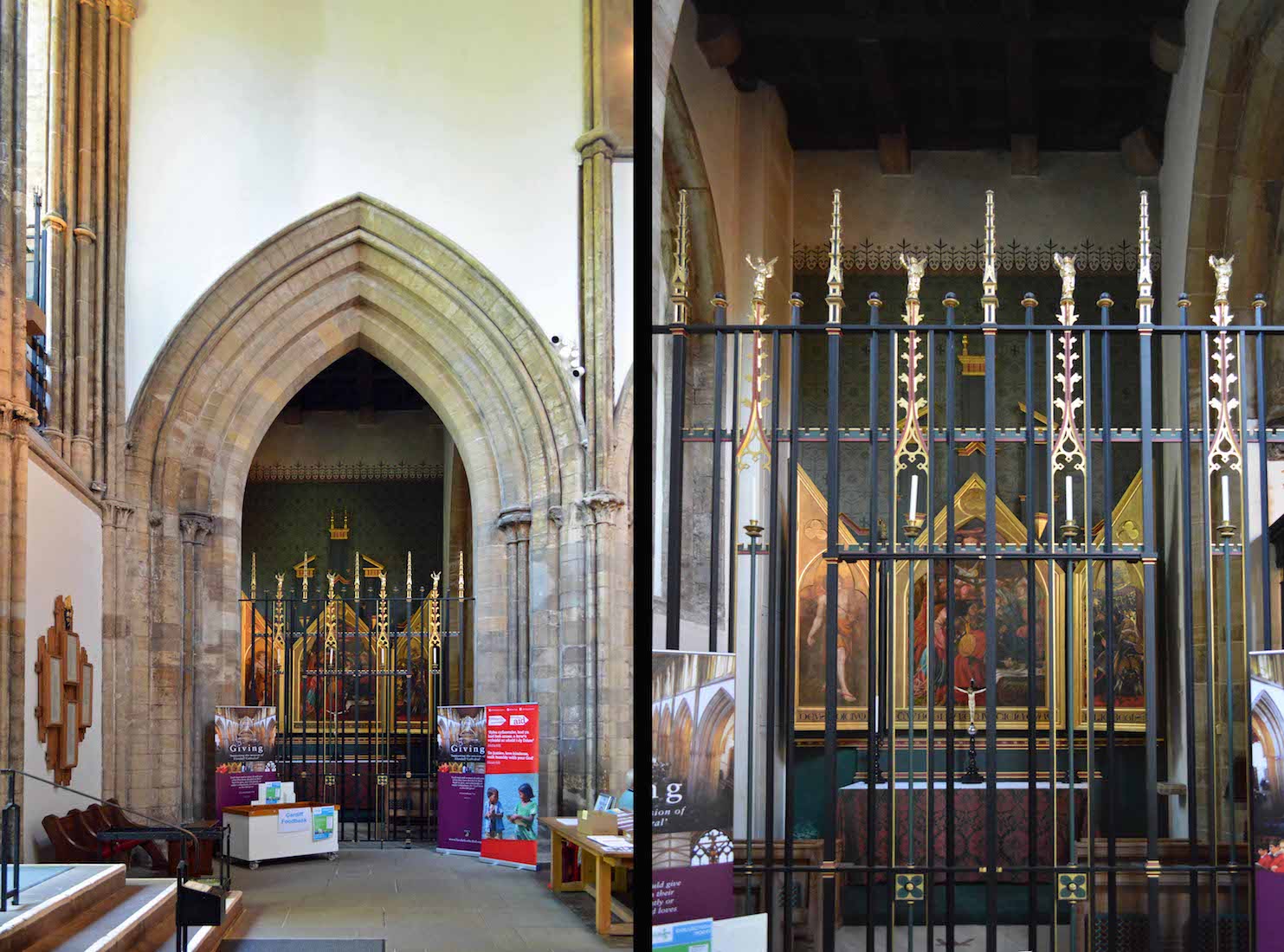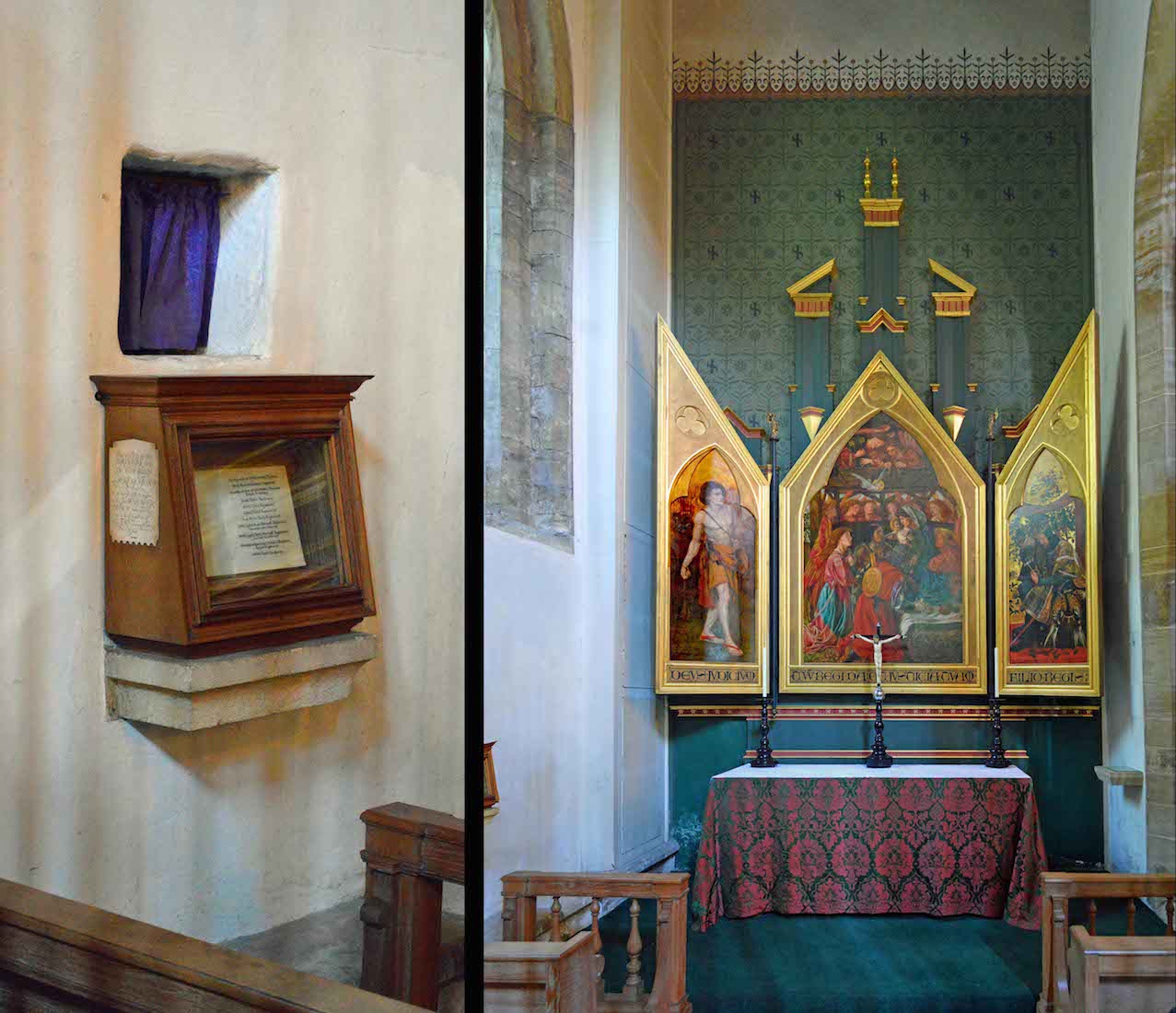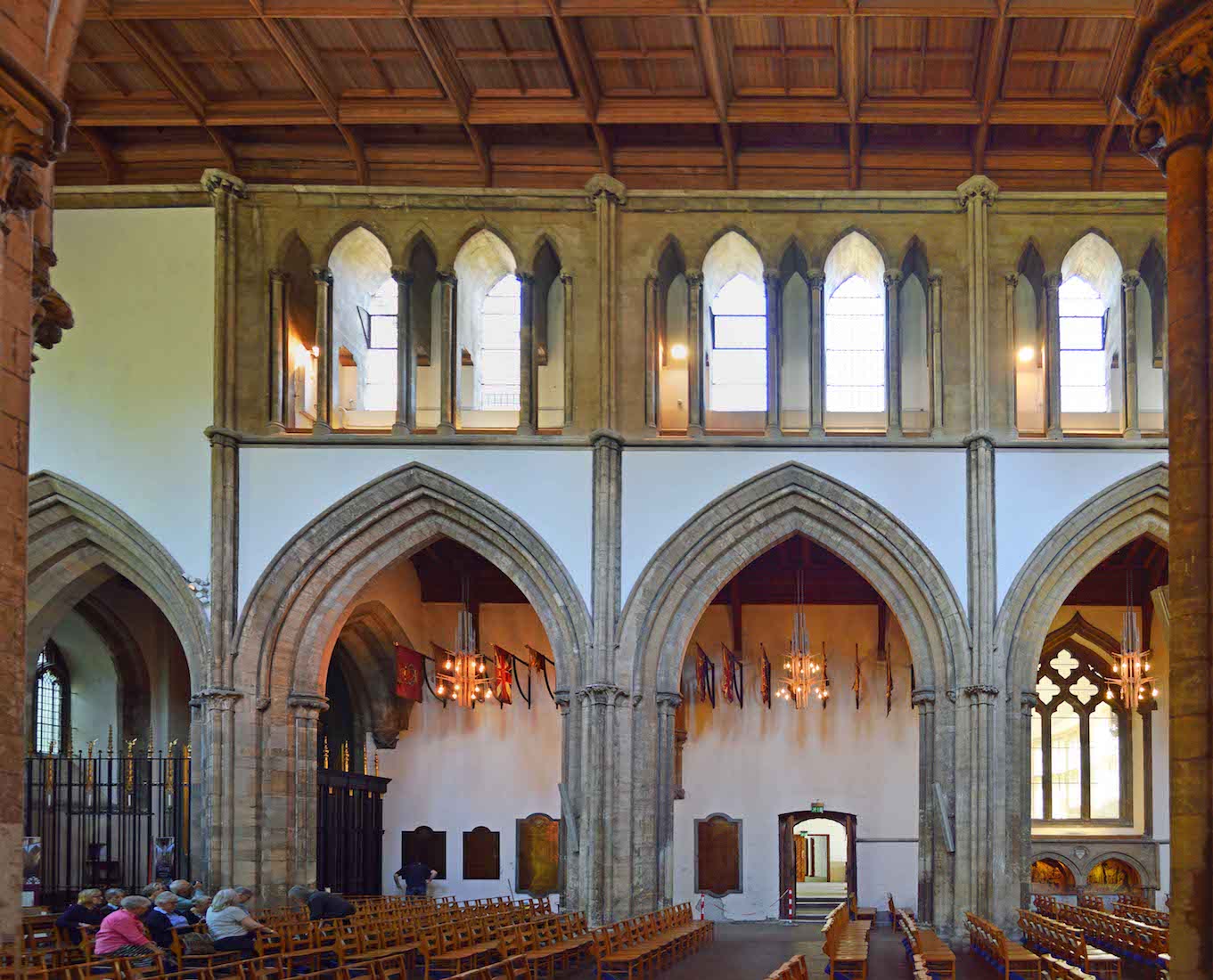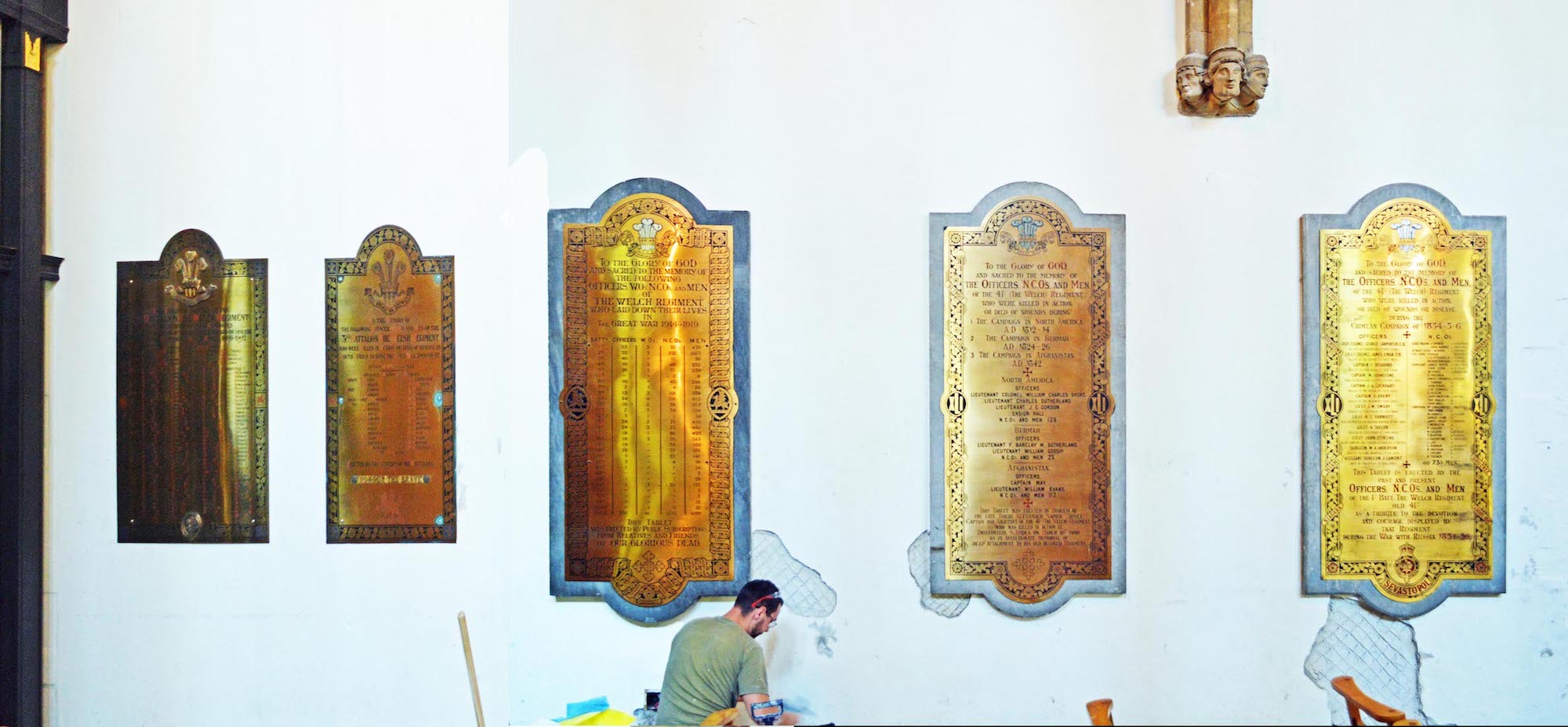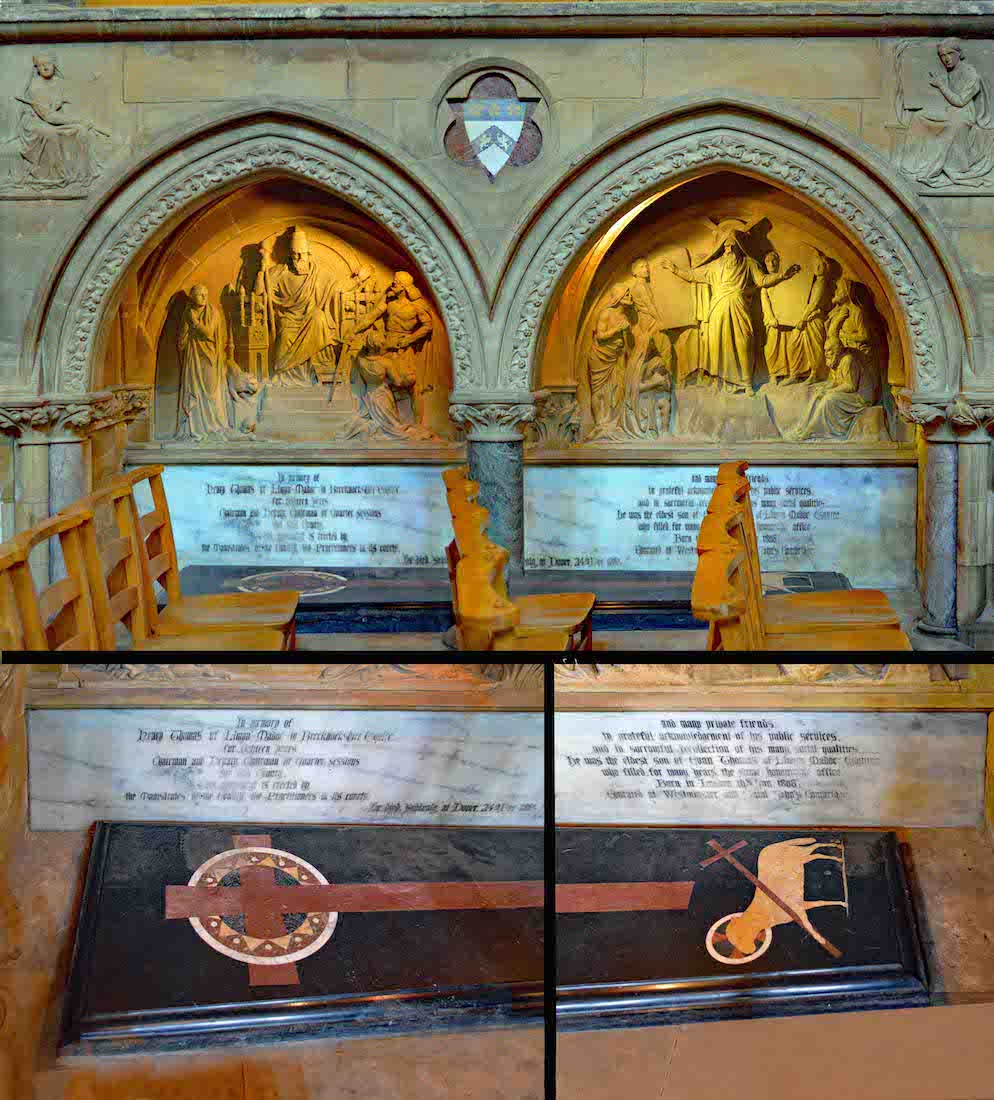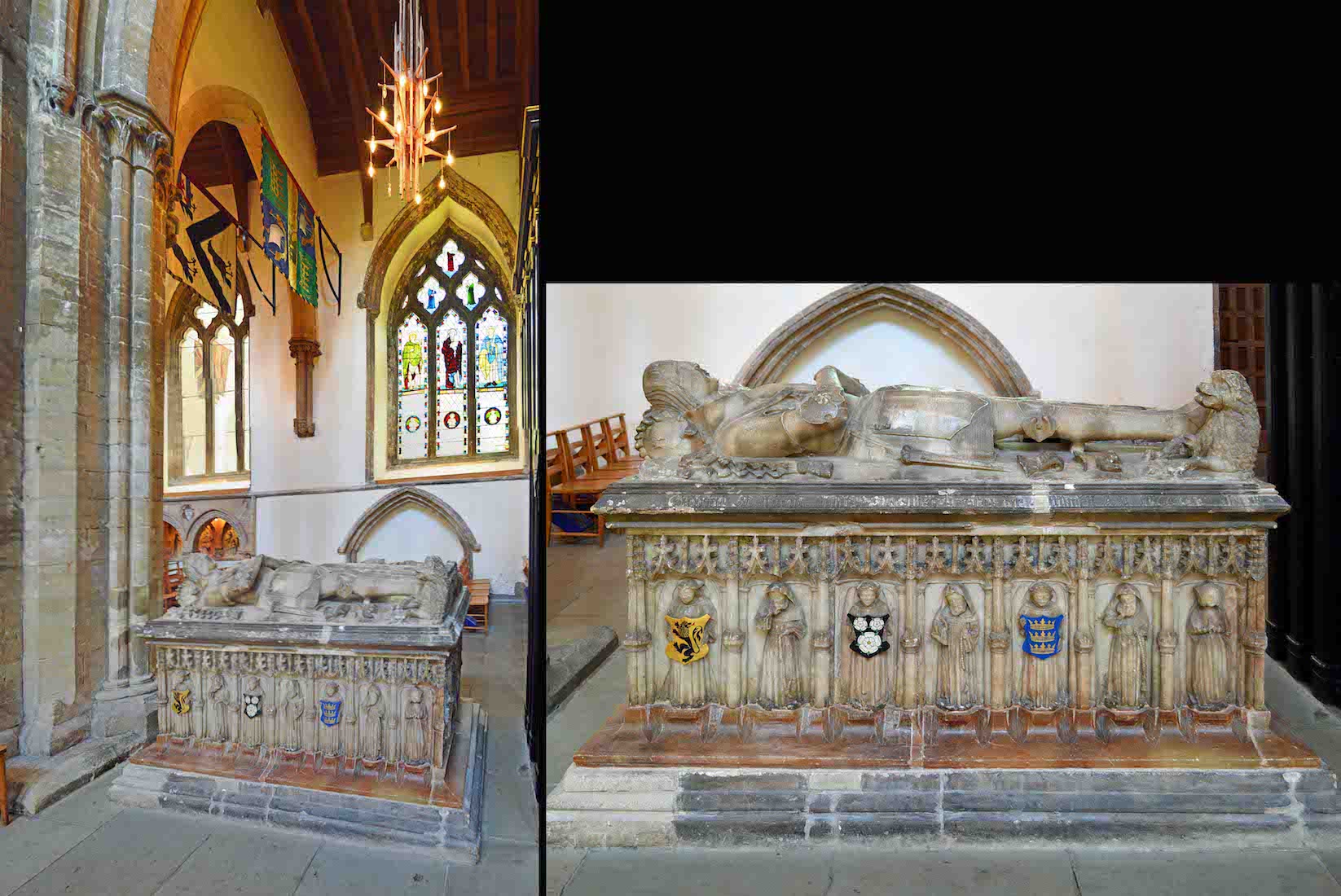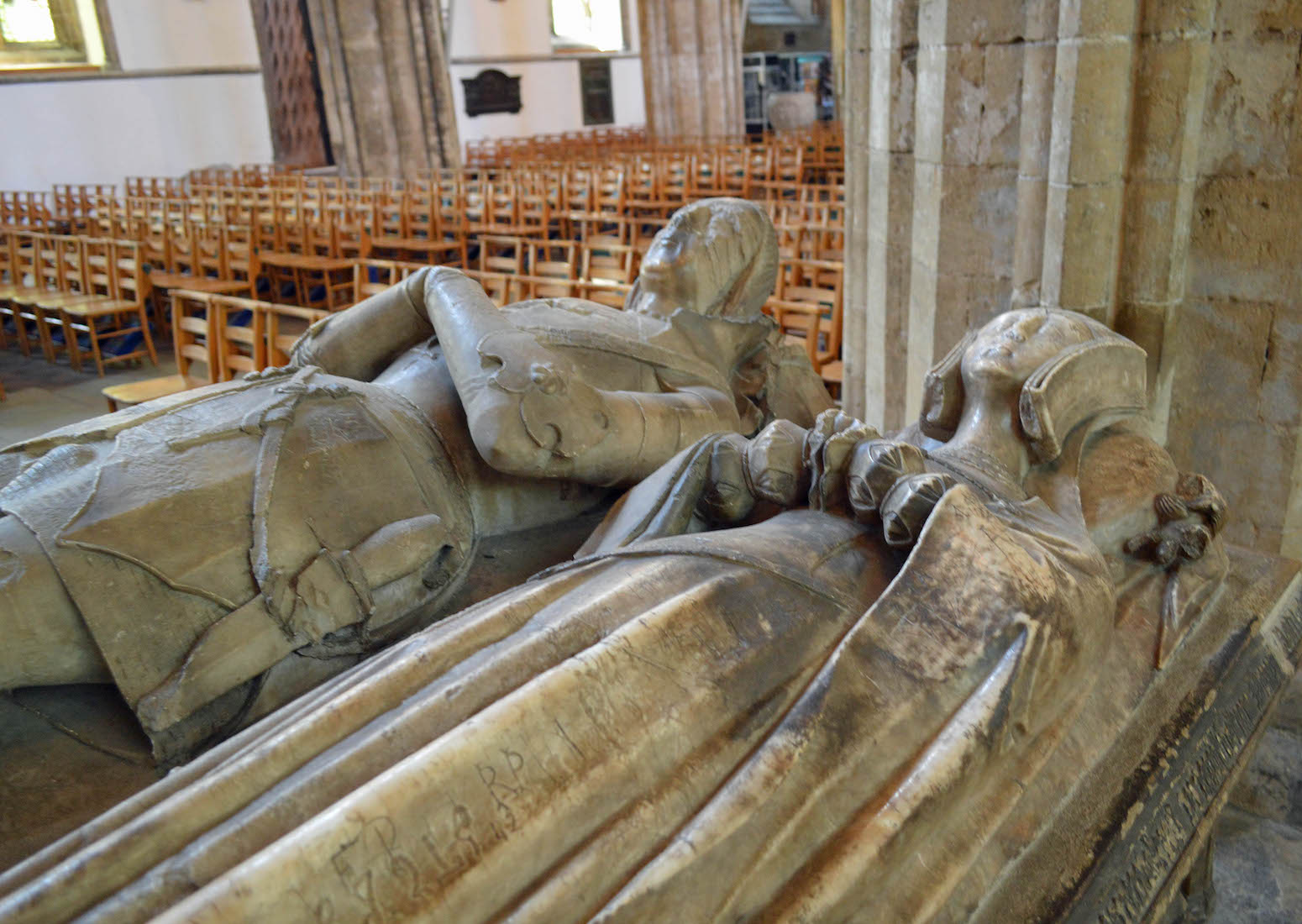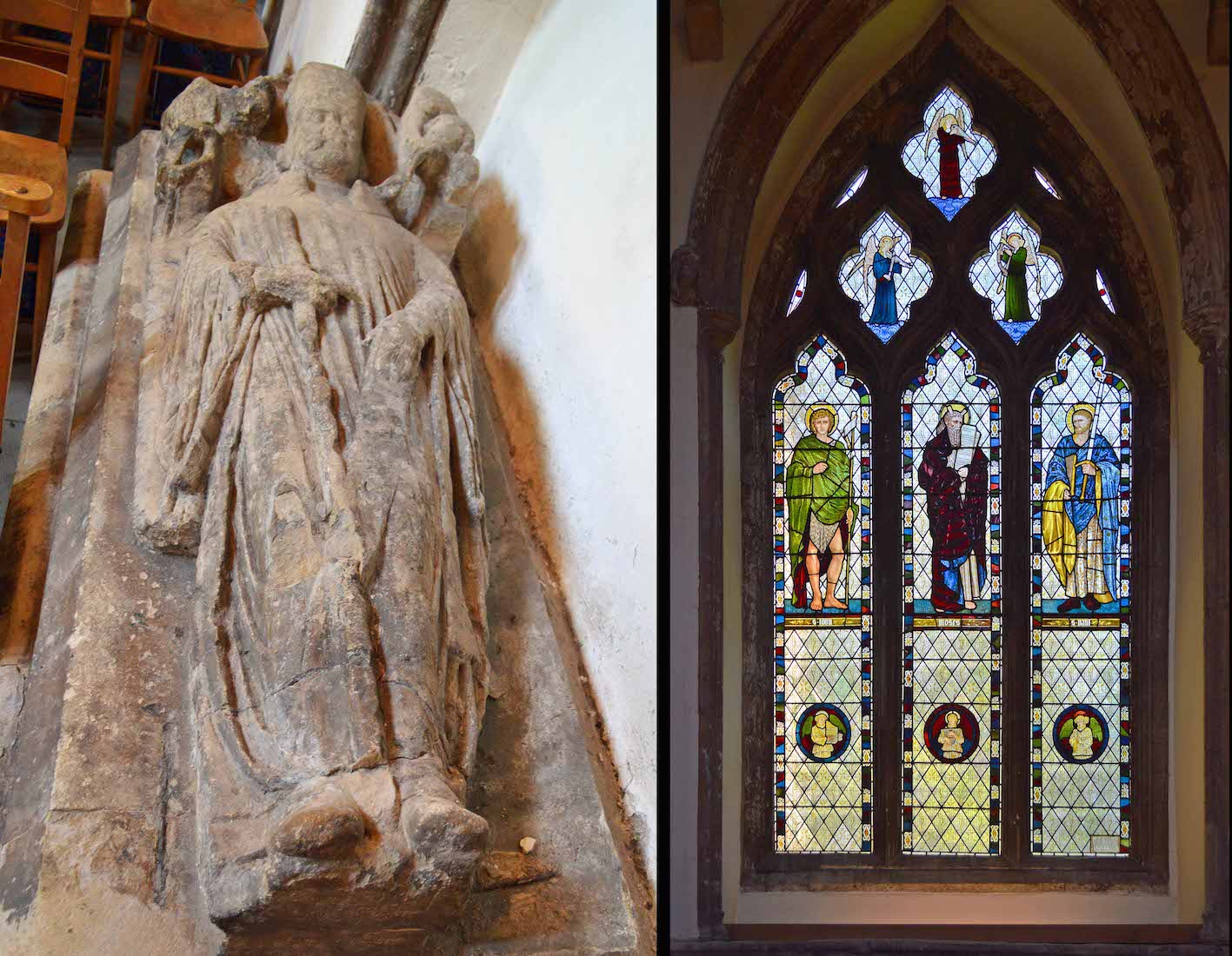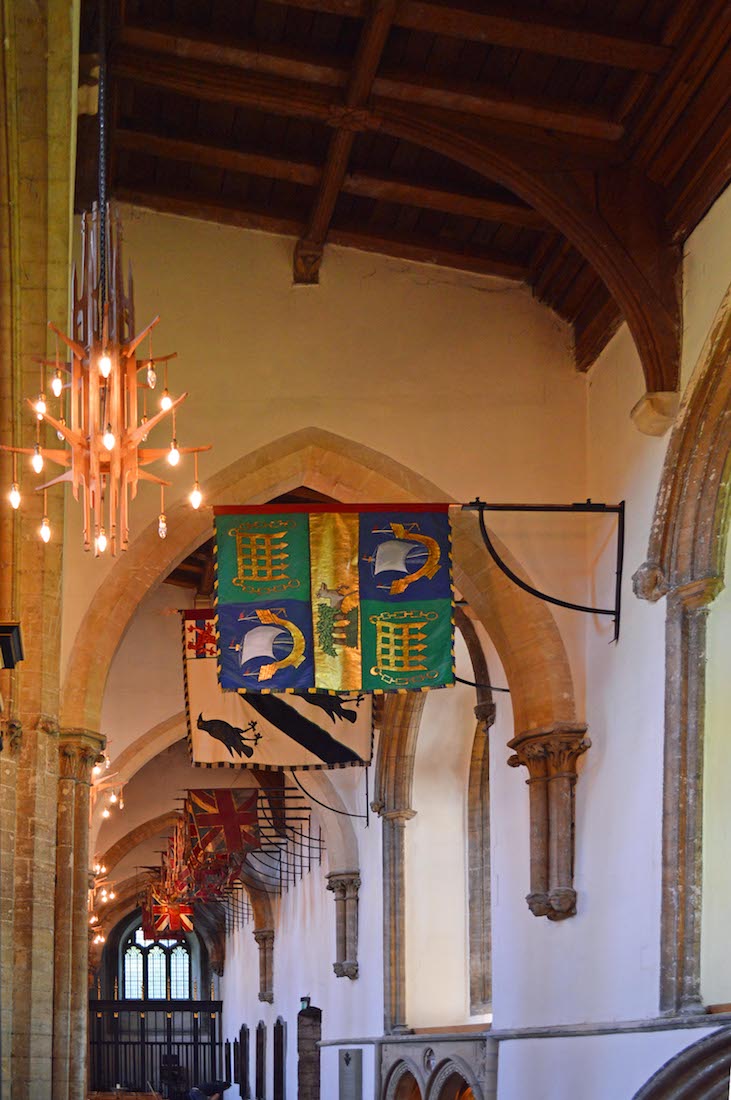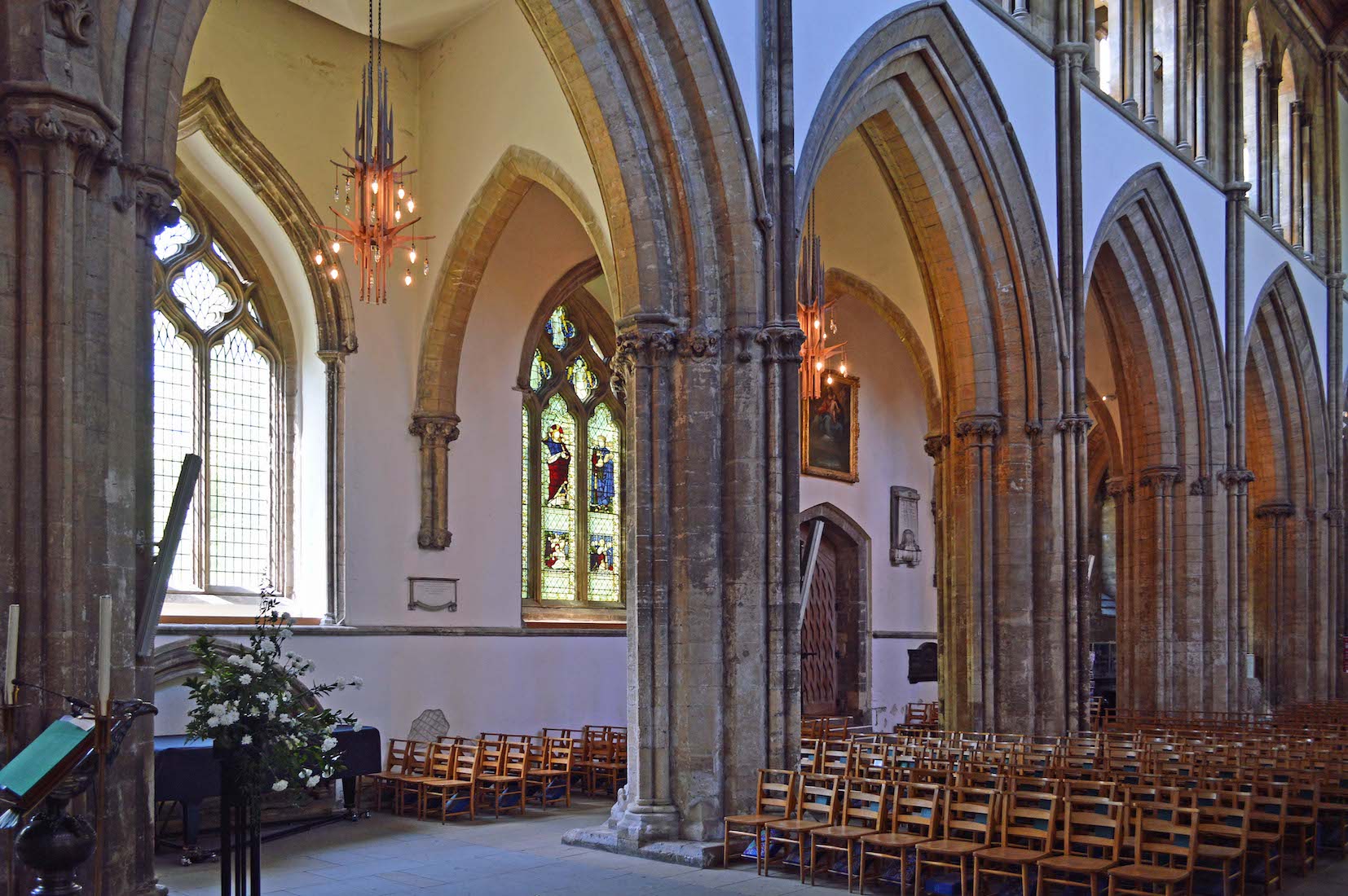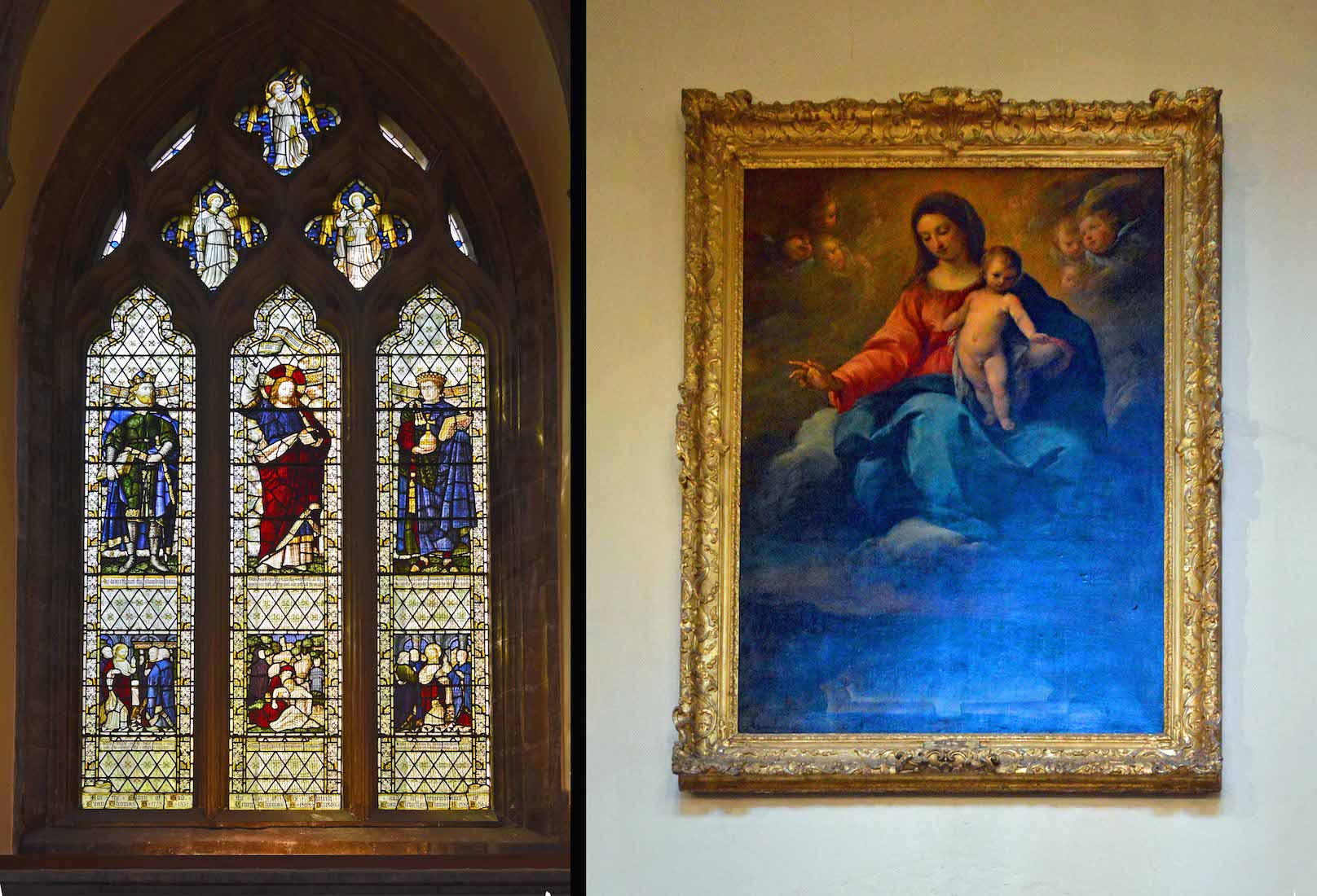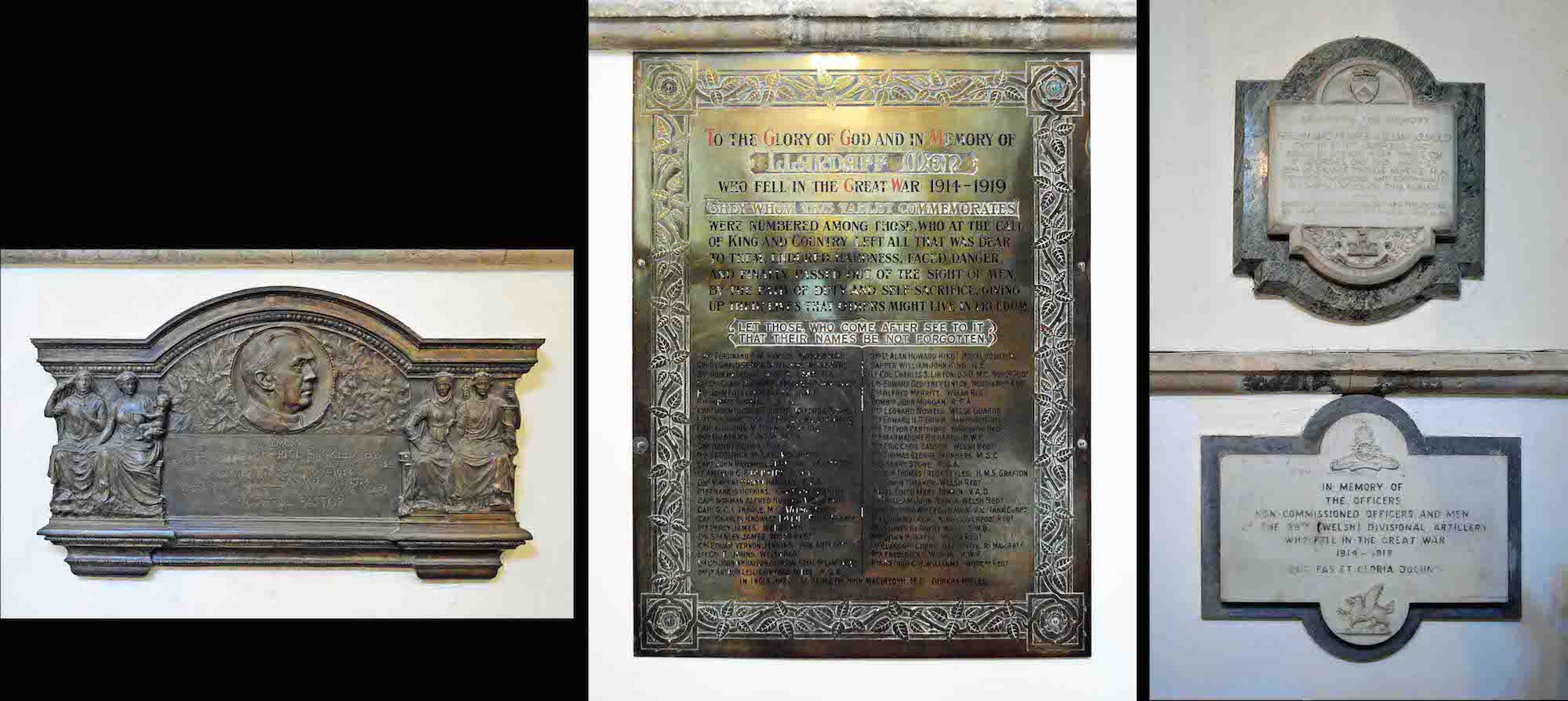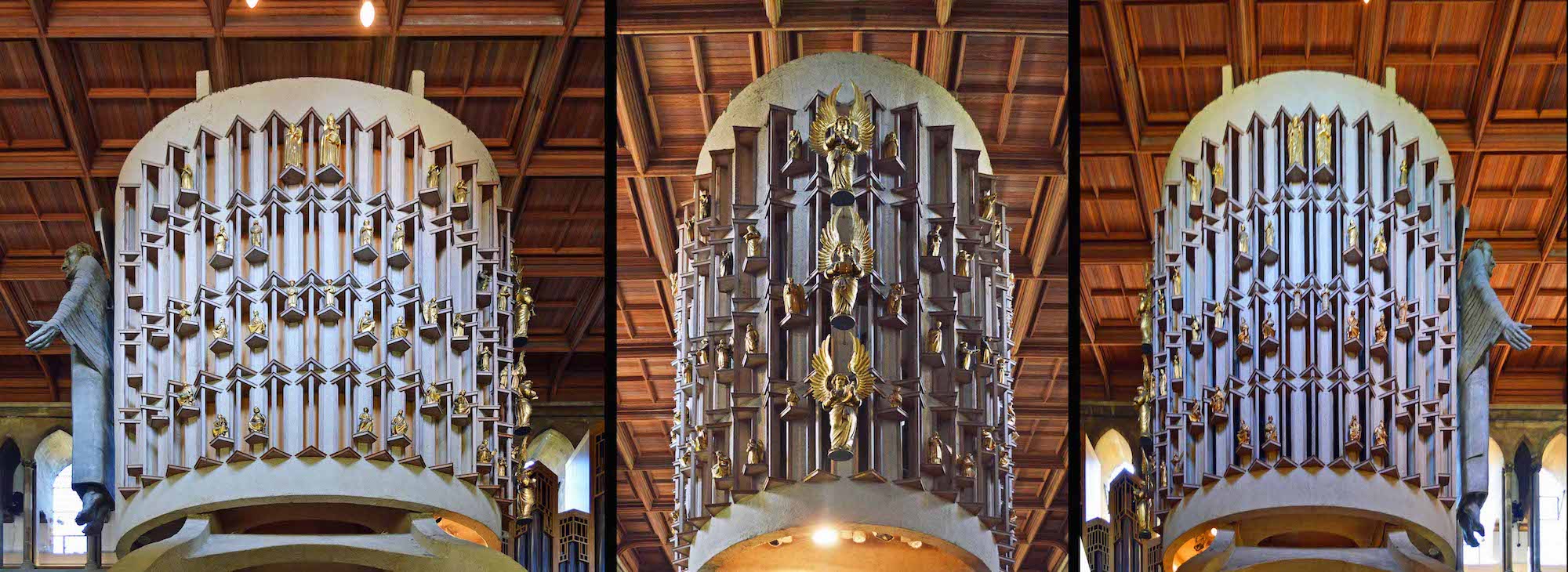
Entering the West door we gain a high view of the nave, as the floor lies several steps down. I found this first view warm and welcomng, and the unusual central pulpitum arch was familiar to me from watching the TV program ‘Songs of Praise’. PLAN
22. NAVE
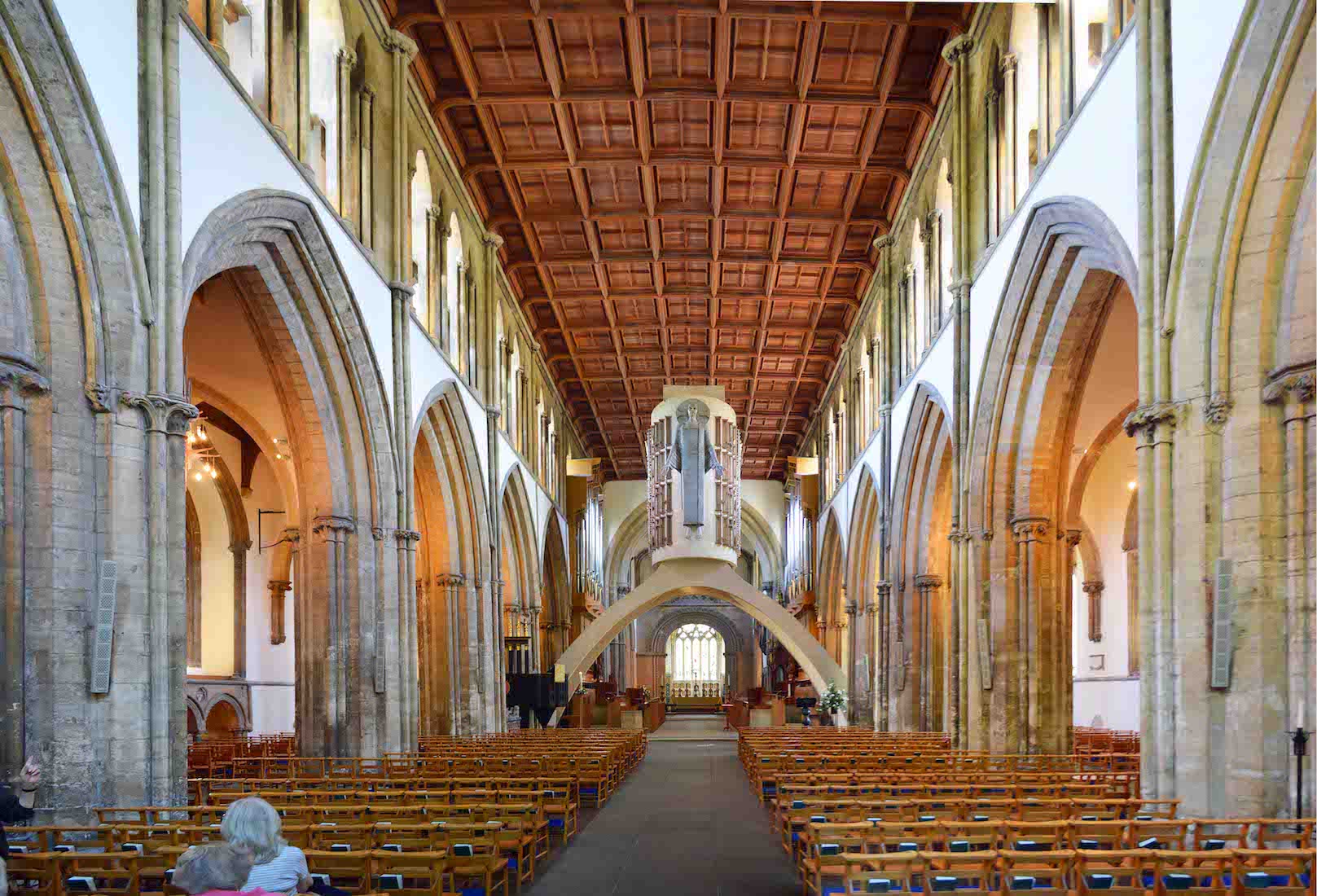
We descend the few steps and stand inside the Cathedral. The supporting arches are pointed in Gothic style – corresponding to the later reconstruction of the nave in the history of the Cathedral. The wide aisle continues, unbroken, straight through the choir to the high altar. The nave arches were completed by 1200 and the clerestory storey above them was added in 1220.
23. NAVE CEILING
The nave ceiling is made of wood: a wooden grid of square supporting timbers, with square wooden insets.
24. WEST NAVE
If we look to the back of the nave, we see the three three lancets of clear squared glass, the entry door, and on the right several lists of names. Also a group of visiting seniors! On closer inspection, we find that the lists are of Cathedral bishops, beginning with 500–545 St Dryfig, 545–569 St Teilo, ... , and Cathedral deans beginning in 1840. Apart from the three Saints, other names here will come to the fore, including: Urban, ap Gwrgant, de Braose, Bromfield, Ollivert, Lewis, Rees, Morgan, ...
25. CORNER SHOP
In the (back) Southwest corner, the tower room has been made into a small shop with items for sale. A Christian Aid poster (in Welsh and English) emphasises the desire to end the injustice of global poverty.
26. BAPTISMAL FONT
Near the shop and in the South aisle stands the baptismal font, carved in 1952 by Alan Durst. The base shows scenes from the lives of St Dyfrig and St Teilo, and on the bowl is pictured the Fall of Man in the Garden of Eden, and his redemption with the Annunciation – the visit of the angel Gabriel to the Virgin Mary. The wooden cover has a carving of a dove, symbol of the Holy Spirit.
27. THE EUDDOGWY CHAPEL
In the opposite Northwest corner we find the Euddogwy Chapel, formerly called the St Illtud Chapel. It was renamed when the new organ was installed. It is the 53rd (Welsh) Infantry Division Chapel.
28. BOOK AND CHAPEL
There is a Book of Remembrance in the corner of the chapel. Behind the altar is the triptych ‘The Seed of David’ by the pre-Raphaelite artist Dante Gabriel Rosetti. This was painted between 1856 and 1864, and originally stood behind the high altar of the Cathedral. The central panel depicts the birth of Jesus; the other panels show David as shepherd and king.
29. NORTH NAVE WALL
We next turn to the North aisle of the nave. Part of this side of the Cathedral faces onto the St David Chapel: a door leads through to this, but we shall explore this later. We notice various Regimental Colours hanging above the aisle, and on the wall, (in fact) five brass memorial plates. The window at right has some sort of feature below it.
30. NORTH WALL MEMORIAL BRASSES
The brasses are all memorials to members of the Welsh (Welch) Regiment who died in various battles and wars. These include Campaigns in America (1812-14), Burma (1824-26), Afghanistan (1842), the Crimean Campaign (1854-56), and the Great War (1914-19). We also see some Cathedral repairwork being undertaken – a constant task!
31. WINDOW NICHE
Beneath this next window are two memorial carvings, which appear to be in memory of people who served in the Public Service. The carving at right shows Moses bringing the Tablets of the Law down from Mount Sinai. The carving at left is perhaps a despotic Pharaoh? Below the window is a decorative tomb slab with a Cross and the Lamb with Flag insignia.
32. THE MATTHEW TOMB
The tomb of Sir William and Lady Jeanette Matthew lies alongside the pulpit. They died in 1528 and 1530 respectively. We notice that the left window behind looks through into the St David Chapel. The window at right is the final of the five windows by William Morris’ workshop to be installed in the Cathedral. There is another effigy lying immediately below this window.
33. TOMB EFFIGIES
Sir William was born in 1460, knighted by Henry VII at Bosworth, and part of the party who accompanied Henry VIII in 1520 at the Field of the Cloth of Gold. This was a site in France that hosted a tournament field as part of a summit in June 1520, between King Henry VIII of England and King Francis I of France.
34. EFFIGY AND WINDOW
This is the effigy lying immediately below the Morris window. It is one of many lying in this Cathedral. The window shows the figures of St Simon, St Peter and St Jude. The outer figures are by Madox Brown, and the central figure is by Burne-Jones.
35. NORTH AISLE LOOKING WEST
Looking back along the aisle we have a more detailed view of the Regimental Colours. These are of the 41st Welch Regiment, along with the Garter Banners of Sir Cenydd Traherne.
36. ACROSS TO THE SOUTH NAVE
In our exploration of the nave, we move across to the South aisle. A stained glass window and a painting attract our attention. The painting is above the 12th century Southwest door.
37. WINDOW AND PAINTING
The painting of Madonna and Child is unknown to me. The window shows Christ at the centre with an unidentified clerical figure on either side – one with a book (Bible?) and a sword, the other with a book and an orb. There are three scenes from the life of Christ below. Two texts relating to Christ are : ‘Thou shalt love the Lord thy God with all thy soul and with all thy might’, and ‘Thou shalt love thy neighbour as thyself’. Other verses are: ‘He beareth not the sword in vain’ and ‘Rulers are not a terror to good works (n)or is the minister of God to that for good’ (Rom 3:13). Also ‘These ought he to have done and not to leave the other undone’ and ‘Render unto Caesar the things that are Caesar’s and give to God the things that are God’s’.
38. WORLD WAR I MEMORIALS
There are a number of memorials on this South wall. At left is a tablet in memory of Ven James Buckley 1849–1924, Vicar of this Parish and a faithful pastor. The others relate to those who died in battle: Ferdinand Arnold who was killed in action aged 27 in 1915, and a list of Llandaff men who fell in the Great War 1914–19.
39. FRONT NAVE
Returning to the front of the nave we are faced with the concrete parabolic pulpitum arch supporting the former organ case. The arch was designed as a ‘pulpitum’ by George Pace in the post-Second World War restoration, to divide the nave from the choir, and yet to leave the whole view from the nave to the Lady Chapel open. Sir Jacob Epstein’s statue of ‘The Majestas’ or Christ in Majesty, was fixed to the organ case in 1957. It is cast in unpolished aluminium and is 16 feet high.
40. AROUND THE ORGAN CASE
Around the organ case are small gilded box-wood figures depicting Old Testament characters, saints and angels. These are Victorian and originally filled niches in the choir stalls, having survived the 1941 bombing.


